Have you ever actually looked at a turkey?
Not the trussed-and-stuffed bird in the middle of your Thanksgiving dinner table, but a live, kicking, glaring American Wild Turkey? They’re cool, weird, and impressively ugly.
When I say turkeys are ugly, I mean it with love. As a birder, I delight in birds that are, shall we say, conventionally unattractive. But the turkey in our back yard isn’t the only ugly bird out there — with 11,000 avian species on Earth, the possibilities for ugly are endless.
So here are our picks for 10 other fantastically weird, bald, and gratuitously ugly birds.
-
Helmeted Guineafowl
(Numida meleagris)
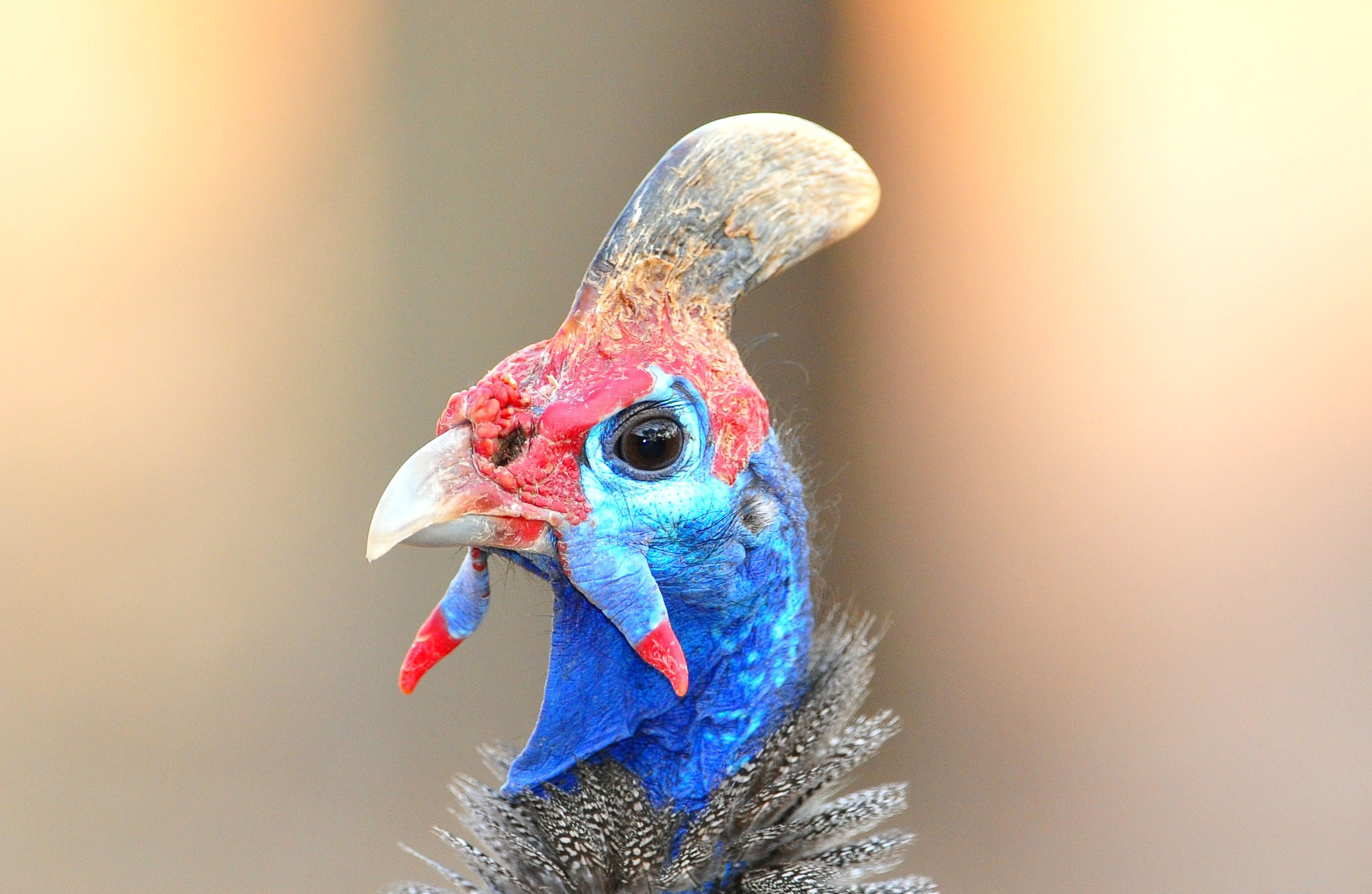
The cassowary’s weird little African cousin. Photo © Ian White / Flickr Take a cassowary, shrink it down to the size of a large chicken, and add black-and-white polka-dot feathers and you get this bird — the Helmeted Guineafowl.
Native to much of sub-Saharan Africa, the species has also been introduced to Cuba, Madagascar, and Australia. Domesticated thousands of years ago, guineafowl are also a favorite of exotic bird collections and partially-domesticated escapees are regular in many parts of the world.
A social species, Helmeted Guineafowl gather in large flocks to feed and roost together in open, dry grassland or savannahs. When frightened, their first instinct is to run instead of fly.
-
Roseate Spoonbill
(Platalea ajaja)
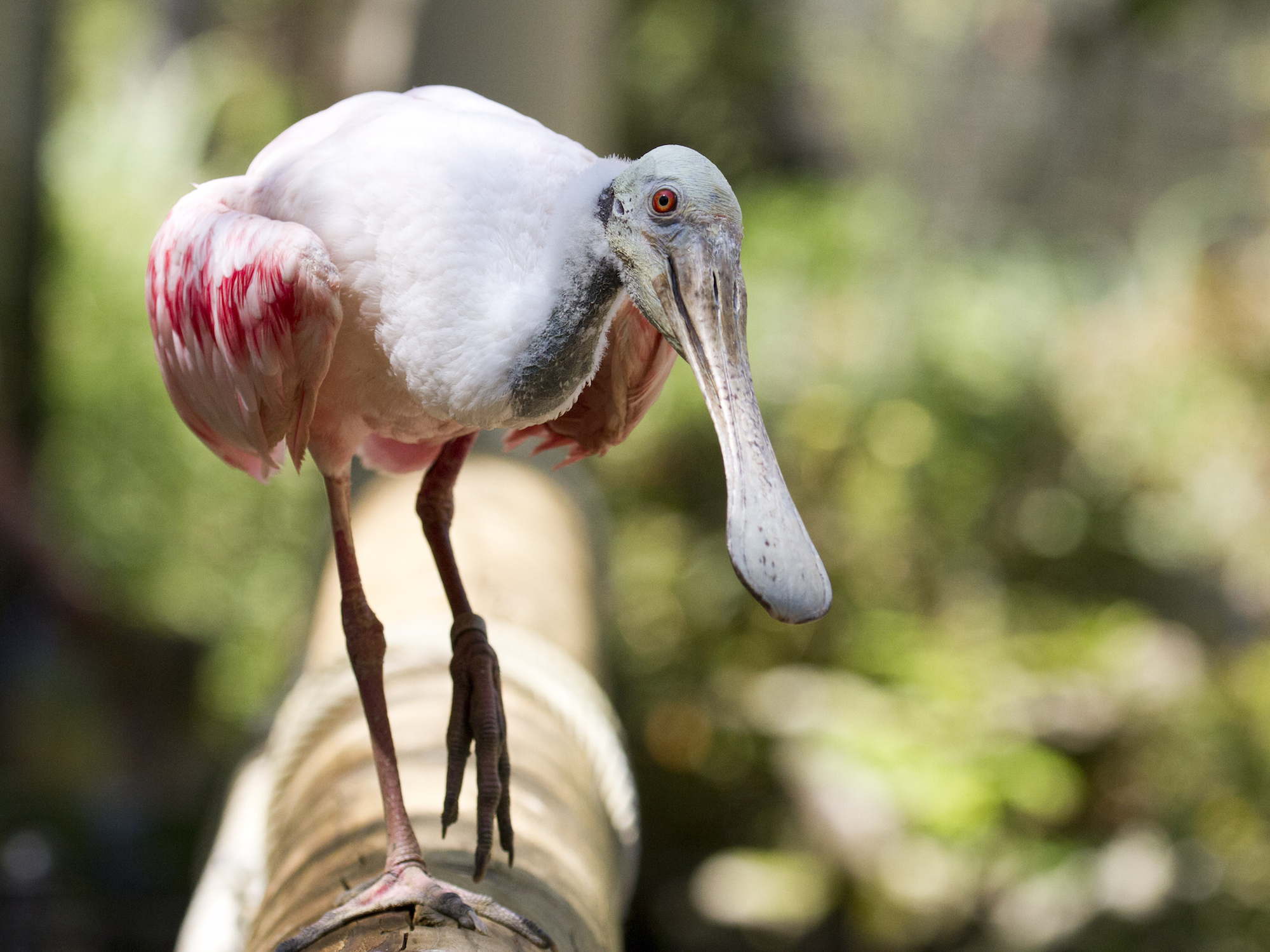
Oh hello there, Mr. Spoonbill. Photo © Nathan Rupert / Flickr I imagine that most people’s first sighting of a Roseate Spoonbill goes something like this: “Oh wow look at that pretty pink bird! It’s a flamingo! Wait a second…oh my gosh I think it has some sort of disease, get back in the car now.”
Despite being colored a vivid, orangey-pink, Roseate Spoonbills are definitely not flamingos. Found in southern Florida, coastal Texas, and Central and South America, these wading birds swing their bizzare bills from side to side as they walk, filtering small fish and aquatic invertebrates out of shallow marsh water. From a distance they look like some sort of weird flamingo-heron hybrid. It’s only when you get up-close to a spoonbill that you realize it has a bald, green-and-yellow head and beady red eyes.
Given their flamboyant coloration, spoonbills were highly prized by plume hunters in the early 1900s. Florida’s population plummeted to just 30-40 breeding pairs, but thanks to conservation efforts the species is recovering slowly.
-
King Vulture
(Sarcoramphus papa)
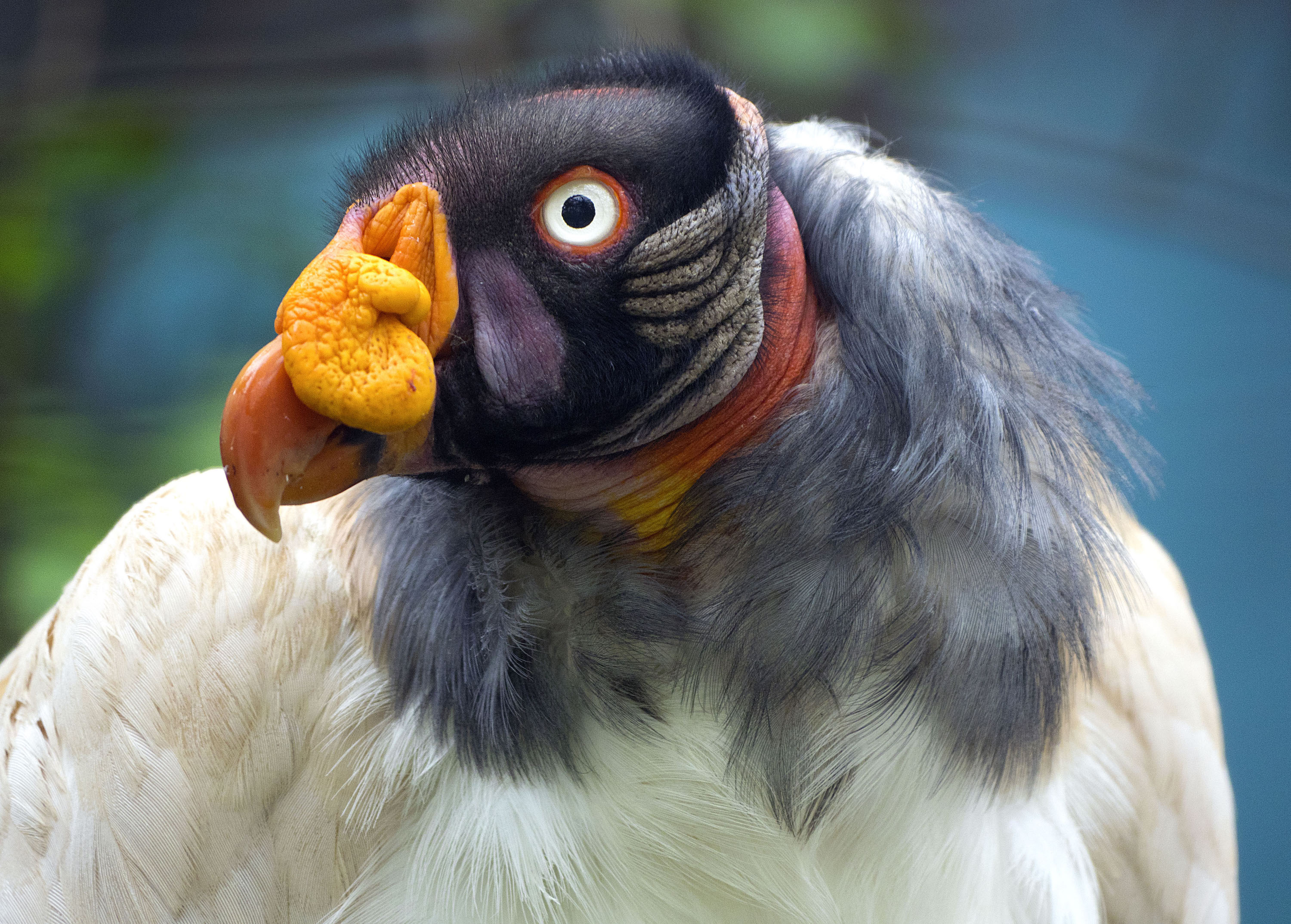
What happens when a vulture trips beak-first into a bucket of paint. Photo © David Ellis / Flickr “Demented clown” are the two words that come to mind after getting a good look at the King Vulture. Not only do they look like they tripped head-first into a bucket of red, yellow, orange, magenta, purple, and blue paint, but their grotesque wattles and bulging eyes make for an unforgettable profile.
Roaming the forest canopies of Central and South America, this species is one of just a few predominantly white vultures. King Vultures typically hunt by watching for other avian scavengers, then bombing in and shooing the smaller birds out of the way while they feed. Though not yet listed as threatened, King Vulture populations are declining across their range due to habitat loss.
-
Marabou Stork
(Leptoptilos crumenifer)
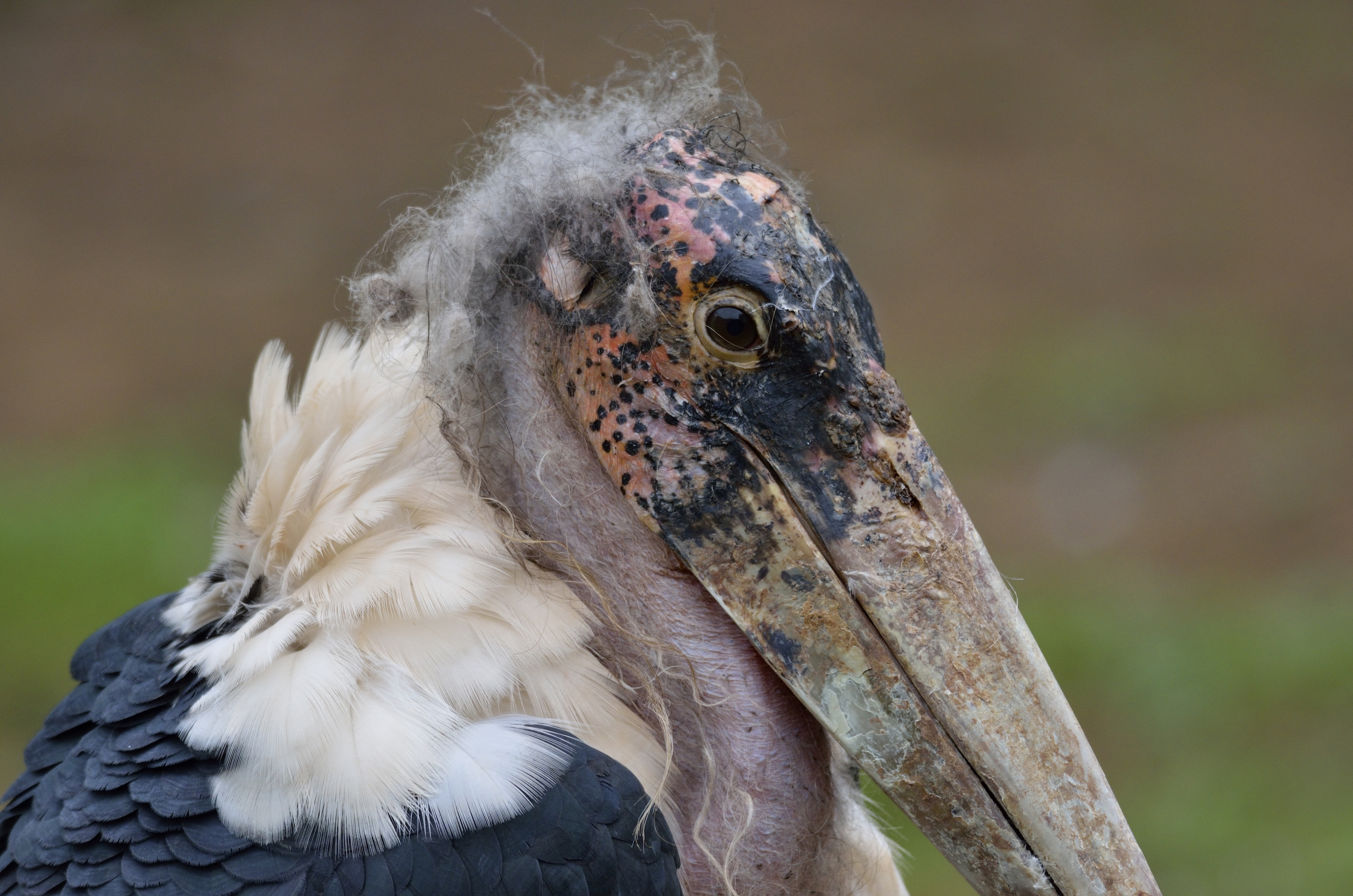
No comment. Photo © Noel Reynolds / Flickr With a face reminiscent of a pair of oversized, mangy kitchen shears, Marabou Storks are the winners of the ugly award within a family of birds known for their, ahem, distinctive looks. Adults are further decked out with a fleshy, dangling pink wattle that looks like some sort of cancerous growth.
Marabou Storks are also huge — with wingspans of seven to nine feet across and bills reaching more than a foot long.
Like many other bald-headed species, the Marabou Stork eats carrion, feces, and just about any type of animal matter it can find and scarf down, including other birds. They also like to eat human garbage, and birds used to human feeding are rumored to attack if not given a prompt snack.
-
Ocellated Turkey
(Meleagris ocellata)
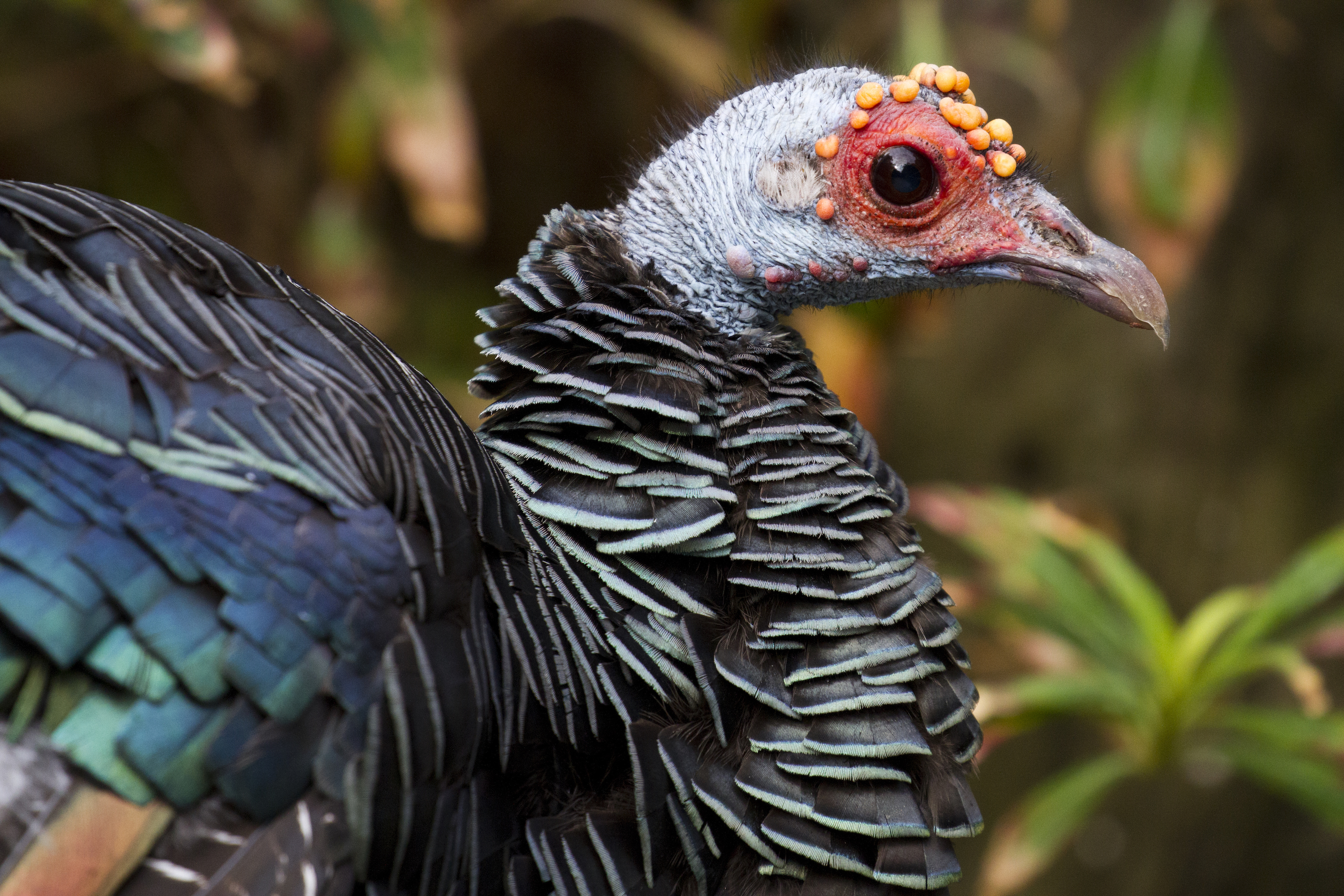
I think there’s a skin cream for that. Photo © Nathan Rupert / Flickr What this other North American turkey species lacks in wattle it makes up for in color: The Ocellated Turkey’s face and neck are shockingly blue and covered in weirdly spherical orange growths. Its plumage is more impressive than it’s northern cousin, with iridescent green and purple tail feathers tipped in gold.
Found throughout the Yucutan Peninsula the Ocellated Turkey is a bit of an enigma. As covered previously on Cool Green Science, we don’t actually know much about the species and its population is likely dwindling from habitat destruction and exploitation.
-
Northern Bald Ibis
(Geronticus eremita)
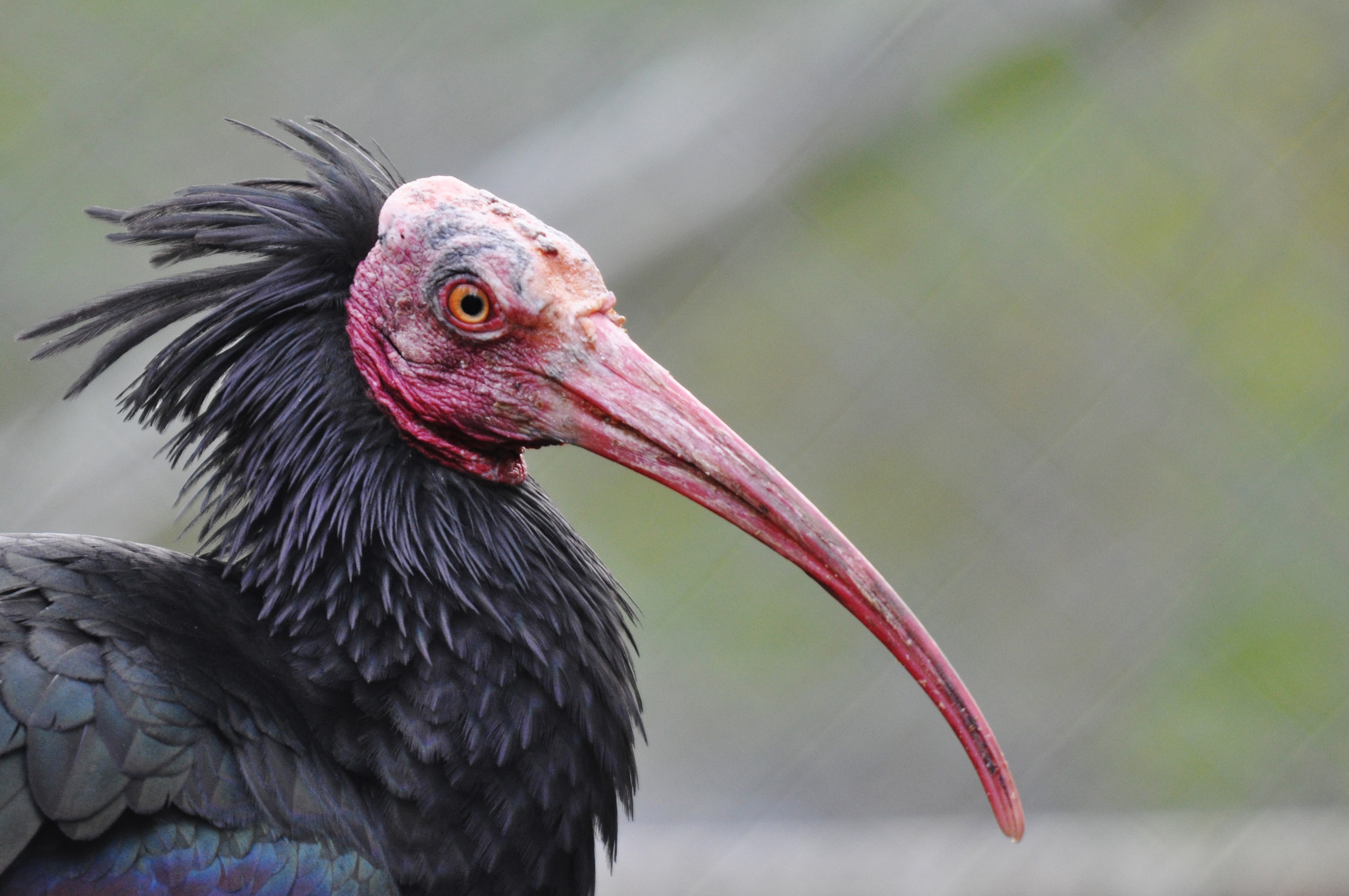
A winner even amongst ibis. Photo © Marcus Woelfle / Flickr Meet the Northern Bald Ibis — unforgettable face, rougish ruff, and extremely endangered.
Once found throughout Northern Africa and the Middle East, Northern Bald Ibis are now restricted to just two populations — one in Morocco containing more than 95 percent of all wild ibis, and second, tiny population in Syria and Turkey. Classified as critically endangered by the IUCN, less than 500 wild birds remain alive today.
Unlike other members of the ibis family, Northern Bald Ibis aren’t wading birds — they nest in colonies on cliff edges and feed on just about any small animal they can find, and sometimes eat plants, too.
-
White-headed Vulture
(Trigonoceps occipitalis)
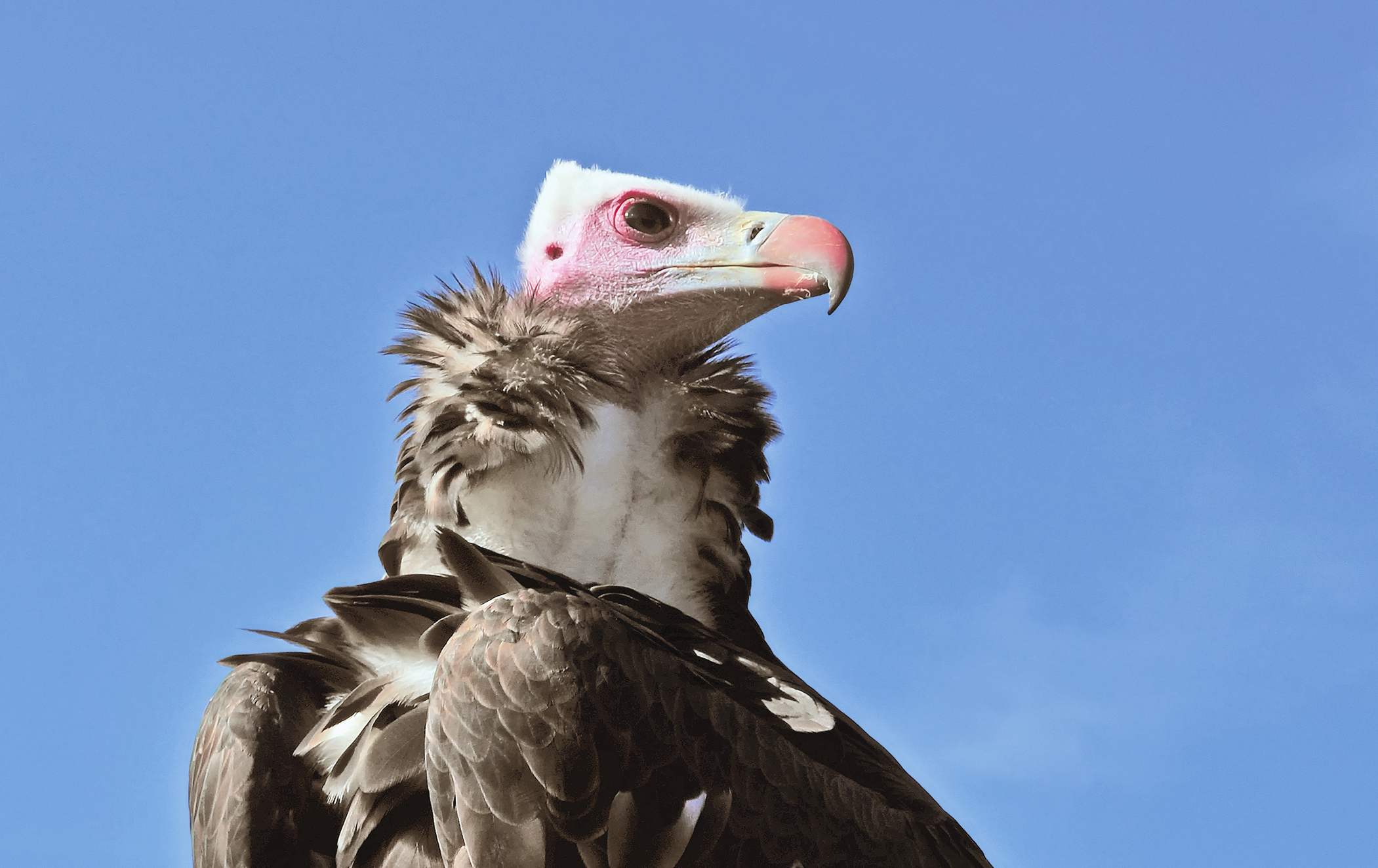
Imperious and hideous. Photo © Michael Gäbler / Wikimedia Commons Who said vultures can’t have mohawks? With a baby-blue and pink face and punkish hair-do, the White-headed Vulture is a lot cooler that it’s name lets on.
Found throughout sub-Saharan Africa, the species is one of four African vultures recently downgraded to critically endangered by the International Union for the Conservation of Nature. (A further more species were upgraded to endangered.)
Scientists estimate that African vulture populations have declined by 62 percent in the past 30 years. Causes of the decline are grim: poisoning, hunting for use in traditional medicine, and deliberate killing by poachers, because the vulture can alert authorities to the presence of dead elephants and other poached species.
-
Wood Stork
(Mycteria americana)
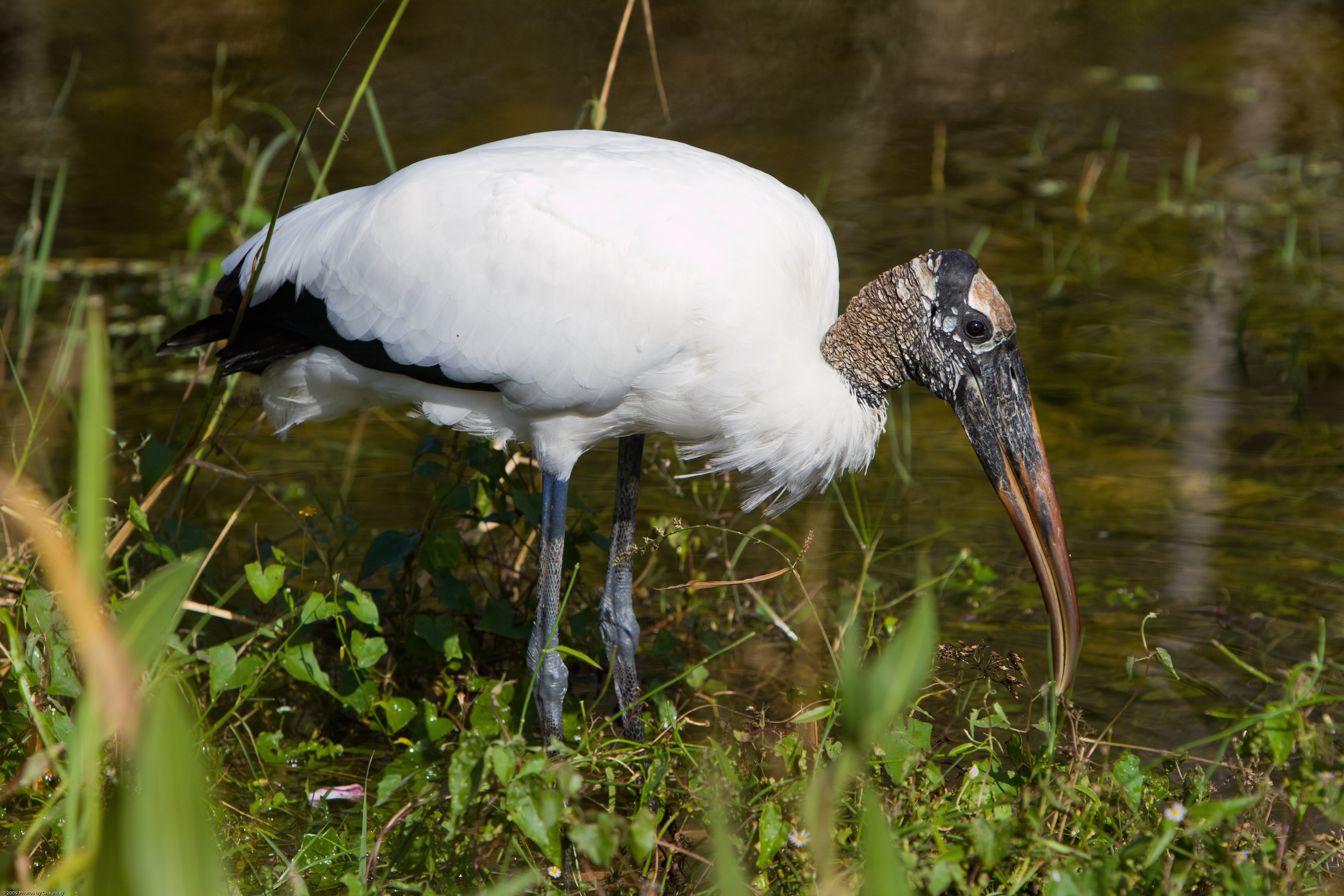
Check out that neck. Photo © Chauncey Davis / Wikimedia Commons Unsurprisingly, Florida boasts not one but two ugly birds on this list.
Denizens of Florida’s swamps and much of South America, Wood Storks are the only breeding species of stork in the United States. Prehistoric, imperious, and pink-footed, they hunt fish, frogs, and insects in shallow waters by holding their bills open until an unsuspecting meal swims into range.
After decades of dedicated conservation efforts to expand their diminished habitat, the Fish and Wildlife Service recently upgraded the Wood Stork from endangered to threatened in 2014.
-
Capuchinbird
(Perissocephalus tricolor)
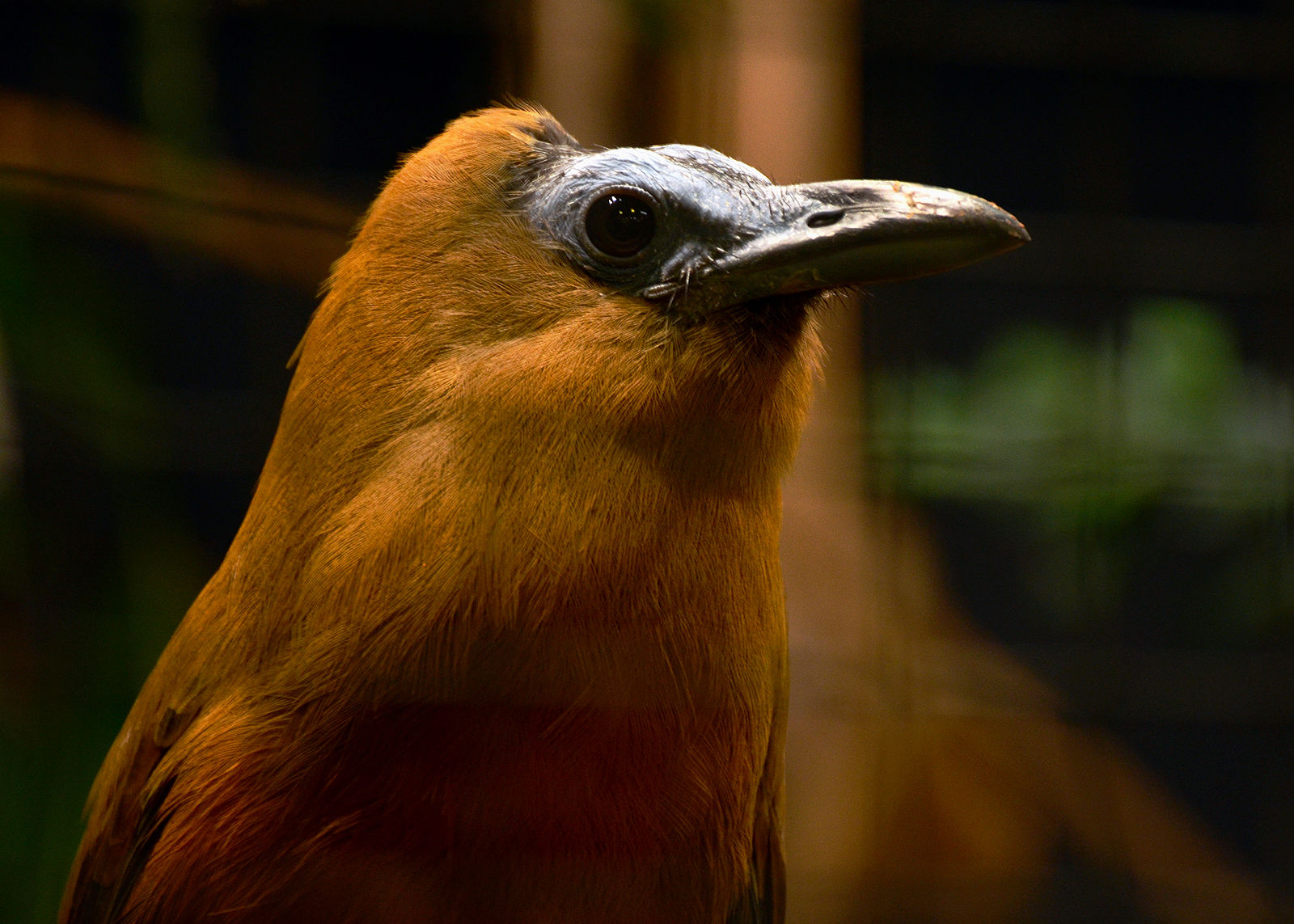
No really, it’s supposed to look like this. Photo © Vassil / Wikimedia Commons This bird is not a joke. And it’s not, despite its best attempts as a disguise, a capuchin monk (or monkey).
Found in northern Brazil, Suriname, Guyana, French Guiana, and eastern Venezuela, the Capuchinbird is best known for it’s absurd vocalizations, which are described as a cross between a lowing cow and a chainsaw. Horrifying calls aside, its looks are pretty distinctive, too.
The population size remains unknown, and worryingly, models of Amazonian deforestation predict that the Capuchinbird will lose around 8 percent of its habitat in the next decade.
-
Southern Cassowary
(Casuarius casuarius)
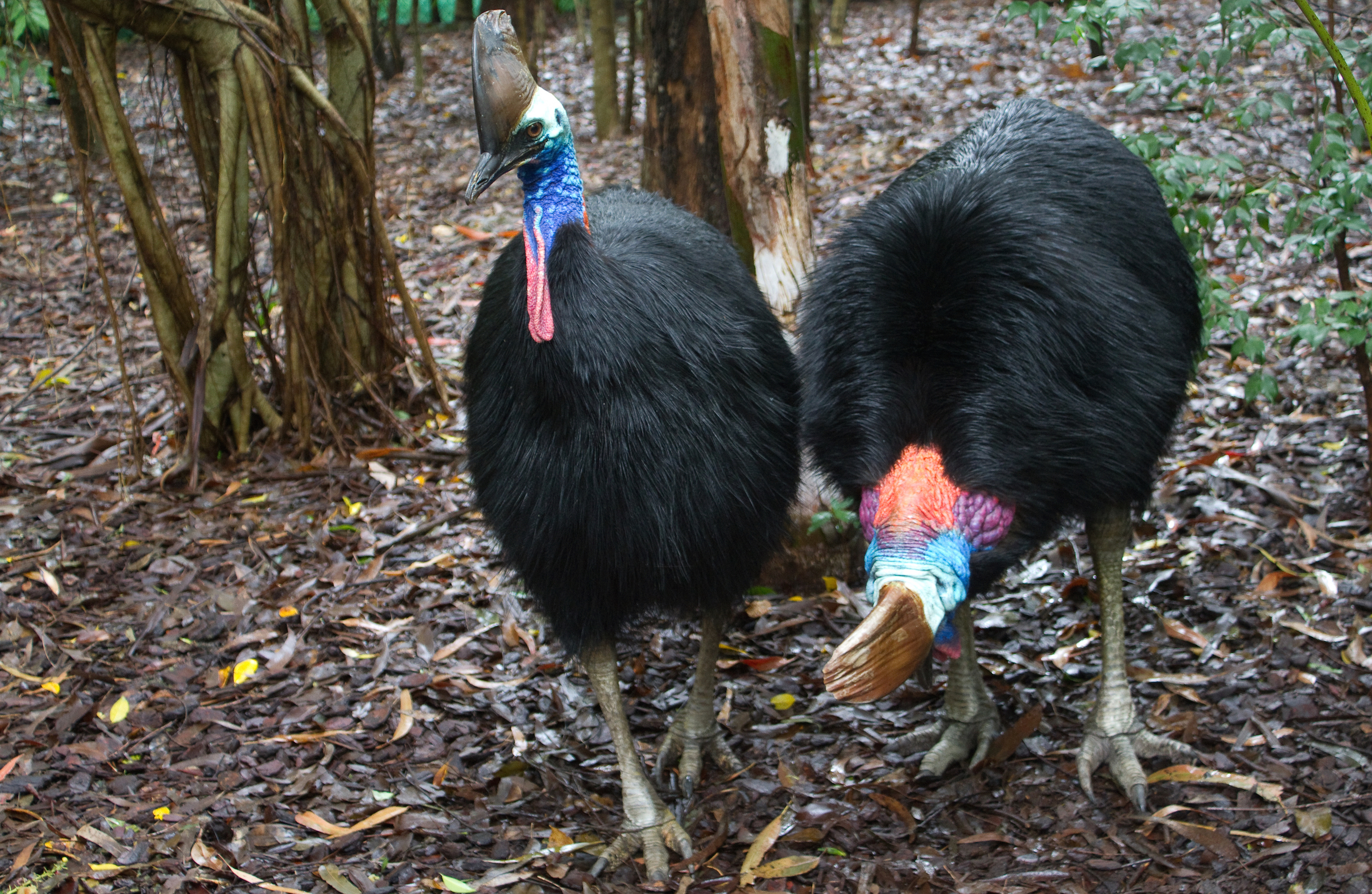
I think we have a winner. Photo © Brian Gratwicke / Wikimedia Commons Ladies and gentlemen, I think we have a winner. No bird can out-compete the cassowary in sheer weird factor.
If you can get past the massive casque (or crest), unsettling eyes, blue throat, and neon double wattle, take a look at the cassowary’s feet. Each three-toed foot sports a dagger-like claw nearly 5 inches long. Yikes.
The Southern Cassowary is the largest of the three cassowaries and the second-heaviest living bird, after the Ostrich. They’re found in Australia’s northern tropical rainforests and the southern half of New Guinea, but despite their rather conspicuous appearance they’re notoriously difficult to find.
But if you do find one… take a good look before high-tailing it in the other direction. (Read more about my search for cassowaries here.)
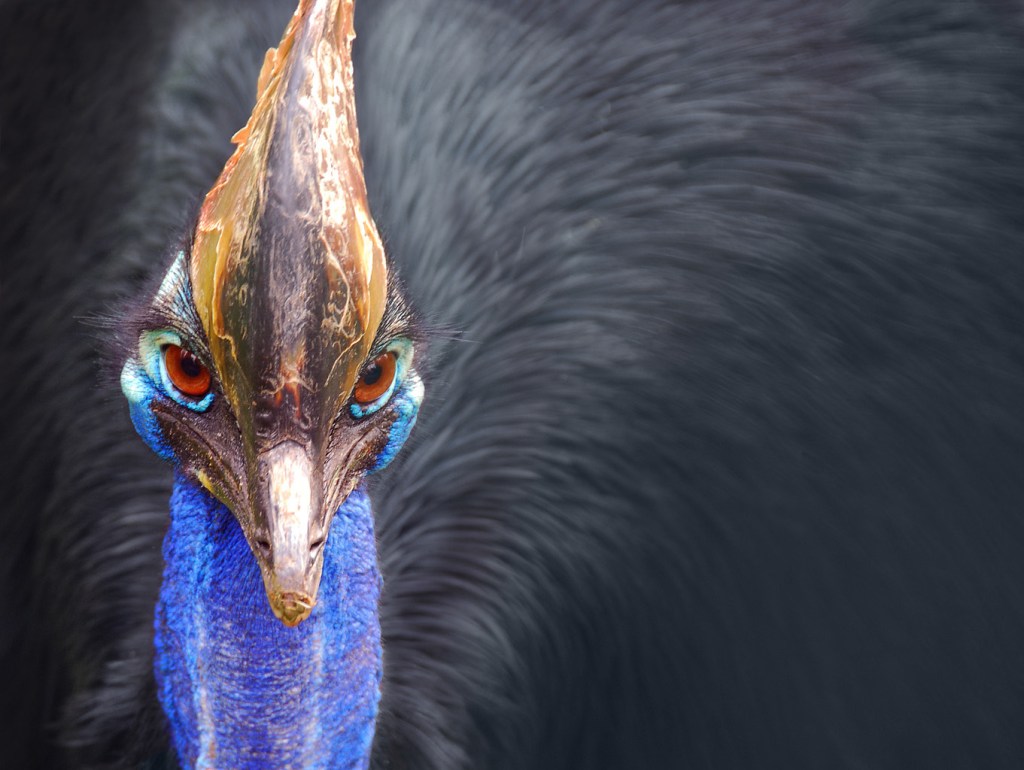



Uganda has a couple of birds that are supposed to make this list from the rare shoebill stork to the Idis hadada https://bujukuecotours.com/activity/birding/
Again Ms. Hausheer, you use the word ugly in describing birds. That term is mean, unwarranted and discriminatory…wrong. No one should access any one or being as ugly. Have you ever seen people who are scarred, burned or born without the socially acceptable or deemed beautiful appearances? I have written this to you before. Please stop labeling beings as ugly. It does no good for you.
Thanks, Justine!
Another stunning presentation, thoroughly enjoyable. Oddly, I find the King Vulture to be lovely in its own way, though there’s no getting around the Marabou Stork for ugliness. And yes, I think the Shoebill ought be on the list, too.
Barbara Mann
It id interesting and unsettling that a human writer would apply ” ugly” to species evolved for very good purpose.
I suggest a COMPLETE rewrite.
While humans who shave thei heads ARE ugly, the word is NOT applicable to other species, and those who DO are in extreme cognitive error.
It is the author’s unquestioned overgeneralization, his misreading of human fitness, in the Darwinian sense, wrongly applied to a species so distant that the generalization only feeds into a (ha!) foul discrimination. Such bullcrap leads to jerks with guns feeling righteous when killing birds.
The many beautiful vultures of Eurasia, originaly so essential to prevention of disease, are diminished. The vast human populations now omit the useful “houses of silence” where bodies were taken to be safely disposed of.
There is a VAST gulf between ” birders” and both science, & the original openness and recognition of equal validity of all life.
The writer needs some extensive time for reflective thought.
You should check out the Ugandan Shoebill Stock at Mabamba https://www.gorillauganda.com/safaris/1-day-mabamba-swamp-shoebill-safari
I can’t believe the shoebill didn’t make the list! https://en.m.wikipedia.org/wiki/Shoebill
In my opinion even the Hadada Ibis should be on this list. It’s common in sub-saharan Africa, mainly in Rwanda, Kenya, Uganda and Tanzania.
Regards,
Alex,
https://www.ugandagrouptours.com/
Believe it or not, turkeys were named after guineafowl and the latter were formerly called Turkey-cocks.
How is the cassowary the number one ugliest bird? That bird has vibrant and beautiful colors. Since I have ornithophobia, I say the King Vulture is the ugliest living bird living on this very planet. MY GOD! That thing haunts my dreams.
Take a look at that cassowary. It’s a dinosaur. Dangerous one, too. Probably evolved from a velociraptor. Just sayin’.
Birds are all beautiful in their own individual ways. Fascinating for their size and color. It’s fun reading about them and learning what they are all about. Having seen Ostrich and Cassowary, and Wood Storks in my own neighborhood learning about these other giant sized birds is a treat.
Miss Hausheer, you bring wonderful information to so many hungry minds. Although, upon reading the piece, Move Over Turkey…
Stating that something is ugly and laughing at it creates an acceptance.
It makes life harder for those who have a similar attribute as the “ugly”.
I believe turkeys, with their bald heads and necks, are really vultures—or were mean to be by nature—and that no one will admit it so as not to ruin, forever, the traditional Thanksgiving dinner; for who would want to eat a vulture!!?? Come on—someone of authority at least admit they eat carrion when available and they’re hungry! In
Cassowaries are common in my place in Papua New Guinea just north of Australia; Western Province of Papua New Guinea. It is where world re-known Bench-back Wild Life is located. There are several types of cassowaries and each differ in size and can be differentiated by the coloring on the neck and the wattle and its height. it is dangerously hunted for its prized meat.
Environmental disaster created by the large OK TEDI Copper Mine has greatly endangered the habitat along the large Fly River system. This is why we land owners want international help.
OMG. That was quite a show, I enjoyed every second. I had no idea that there
were so many, uh, ugly birds in the world. I actually never really thought about it before.
Although, I do live in an area that has, The Turkey Vulture, not a pretty bird. We
do have a huge hollowed out tree by a lake that several of them nest in. They often
fly over our house, thank goodness, and fly over to the next street and make their
mark there. Thank you for those beautiful pictures.